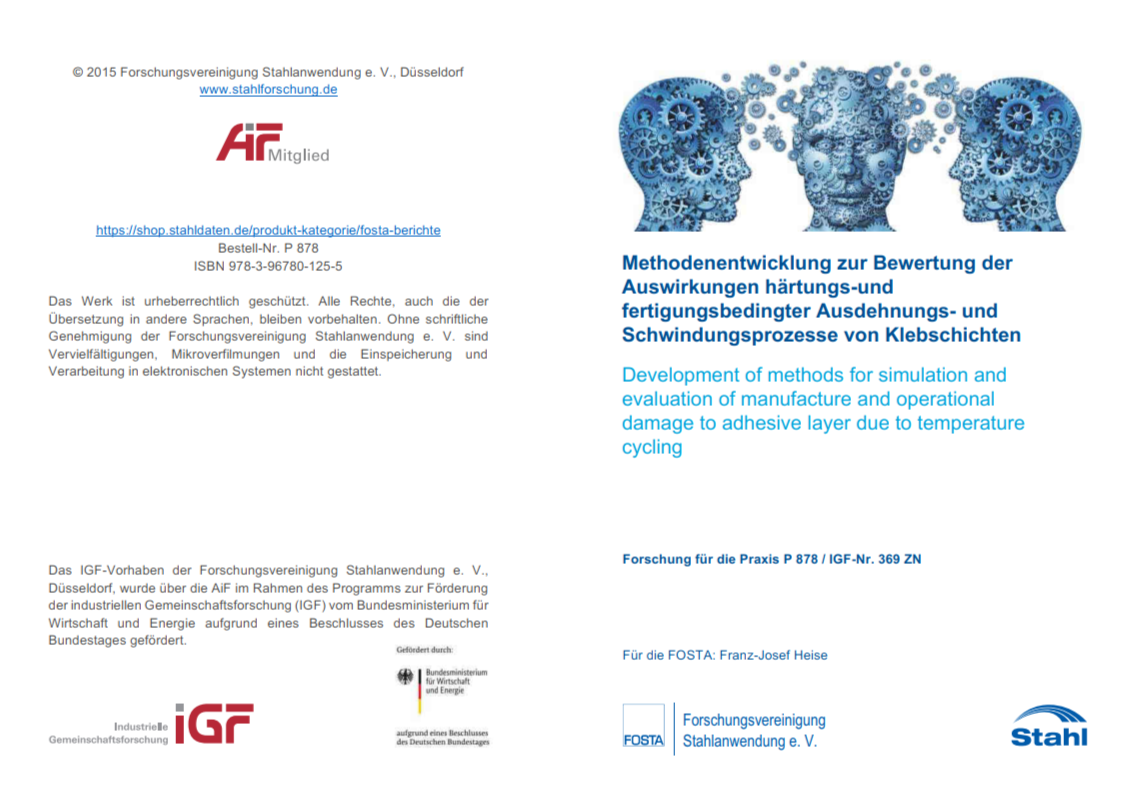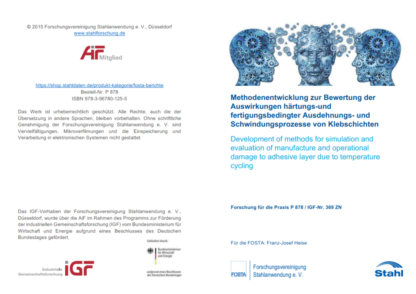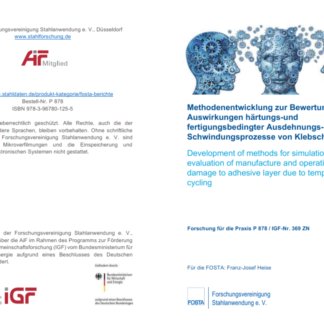Description
P 878 – Development of methods for simulation and evaluation of manufacture and operational damage to adhesive layer due to temperature cycling
The lightweight construction will make a significant contribution to sustainable CO2 reduction in new car body developments. Costs efficient lightweight solutions for car mass production offers the multi-material design. The key to successfully drive this development trend is a particularly economical, safe and sustainable joining technique, the adhesive bonding.
In automotive production the car body must be heated in the oven to ensure the curing process of the adhesives. The increase in temperature leads to different expanding of adherends according to their individual thermal expansion behaviour. Stresses occur, which may be so great that it can cause damage to the joint area. During the cooling of the bonded construction, again relative displacements occur between the joint partners, which can lead to joint failure. These effects influence the usability, sustainability and long-term durability of adhesively bonded components and have not been considered yet in automotive car body design.
Within this research project, a test stand was built, where adhesive bonds can be cured under arbitrary temperature-time profiles, to simulate the cathodic dip-paint, process, for example. Various degrees of adhesive curing were realized and the influence on the joint was evaluated in a subsequent tensile test. Parameters such as the maximum strength or displacement at fracture, but also the plastic deformation behavior of the used toughened adhesive system depend on the degree of curing. Temperature-related relative displacements are simulated by applying an additional mechanical stress during adhesive curing. Furthermore, tests on the so-called “ bimetal specimen” as a component-type specimen are performed. Influence of temperature-related displacements on the mechanical properties of the adhesive bond is evaluated in a subsequent tensile test. There is a significant influence of relative displacement during adhesive curing on the mechanical behaviour of the adhesive joint.
Published in:
2015
Authors:
Prof. Dr.-Ing. G. Meschut, Prof. Dr.-Ing. habil. A. Lion, Prof. Dipl.-Ing. A. Matzenmiller, Dipl.-Geol. Ch. Liebl, Dipl.-Ing. P. Kühlmeyer




